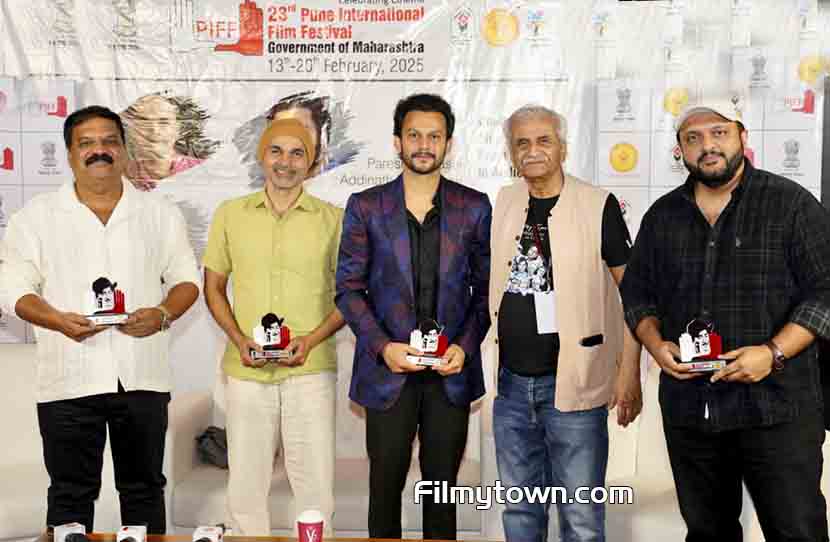Panel Discussion on Marathi Cinema at PIFF highlights struggles of Industry
While Marathi cinema needs well-written, compelling stories to thrive, it is equally important to have innovative ideas for promotion and distribution to ensure their success, according to filmmakers and directors at a recent panel discussion.
As part of the 23rd Pune International Film Festival (PIFF), a panel discussion titled “Marathi Cinema and its New Challenges: Production to Audience” was held today. Prominent filmmakers, including Sunil Phadtare, Paresh Mokashi, Adinath Kothare, and Aditya Sarpotdar, shared their views on the subject.
Paresh Mokashi emphasized that attracting audiences is a challenge for films across all languages. “The only solution is to create a good film. However, just because a film seems good from the creator’s perspective does not guarantee commercial success. Films like Walvi and Aatmapamphlet didn’t do well, which is why I had to make Nach Ga Ghuma,” he said. Mokashi also pointed out the common perception that films addressing social issues are inherently superior, which often leads to debates. “These ideas are ingrained in society from childhood and are further reinforced by critics,” he added.
Producer Sunil Phadtare, whose recent film Sangeet Manapaman did not receive the expected response despite a high production budget, shared his concerns about audience engagement. “People discuss films on social media without actually watching them, which impacts their reach. The advent of OTT platforms in recent years has only worsened the situation,” he said. He also highlighted that in South India, audiences watch a new film every week, whereas this culture is missing in Maharashtra. “Earlier, single-screen theaters kept ticket prices low, but with the rise of multiplexes, ticket prices have soared, leading to a decline in audience numbers,” Phadtare explained.
Adinath Kothare stressed the need for risk-takers in Marathi cinema. “Corporate companies do not invest in Marathi films because they operate within fixed parameters, making it difficult for Marathi cinema to fit in. To change this, it is crucial to have Marathi-speaking individuals in key decision-making positions within these corporations,” he asserted. He also pointed out that South Indian films gained national recognition with the support of television networks, which helped them expand across the country. Kothare shared his personal experience of the challenges faced while making and releasing his film Paani.
Director Aditya Sarpotdar presented a sobering reality about the financial state of Marathi cinema. “In 2024, the total revenue of Marathi films was less than ₹200 crore, with only five films crossing the ₹10 crore mark. In contrast, the Malayalam film industry generated ₹1,300 crore in the same period,” he said. According to him, the lack of effective marketing and promotional strategies has been a major setback for Marathi cinema. “Traditional publicity methods are still being used, and Marathi films continue to lag behind financially compared to other regional cinemas. We need to think outside the box and introduce innovative ideas in marketing, distribution, and exhibition. There is also a lack of strong agencies to handle promotions effectively,” he pointed out.
Sarpotdar further emphasized the significance of film festivals. “When films are showcased at festivals, they generate discussions and gain visibility, which helps them in the long run. Many directors have emerged from such platforms,” he noted. Paresh Mokashi echoed this sentiment, acknowledging the impact of PIFF on his career. “Our generation has been shaped by PIFF. It played a crucial role in our journey forward,” he concluded.






